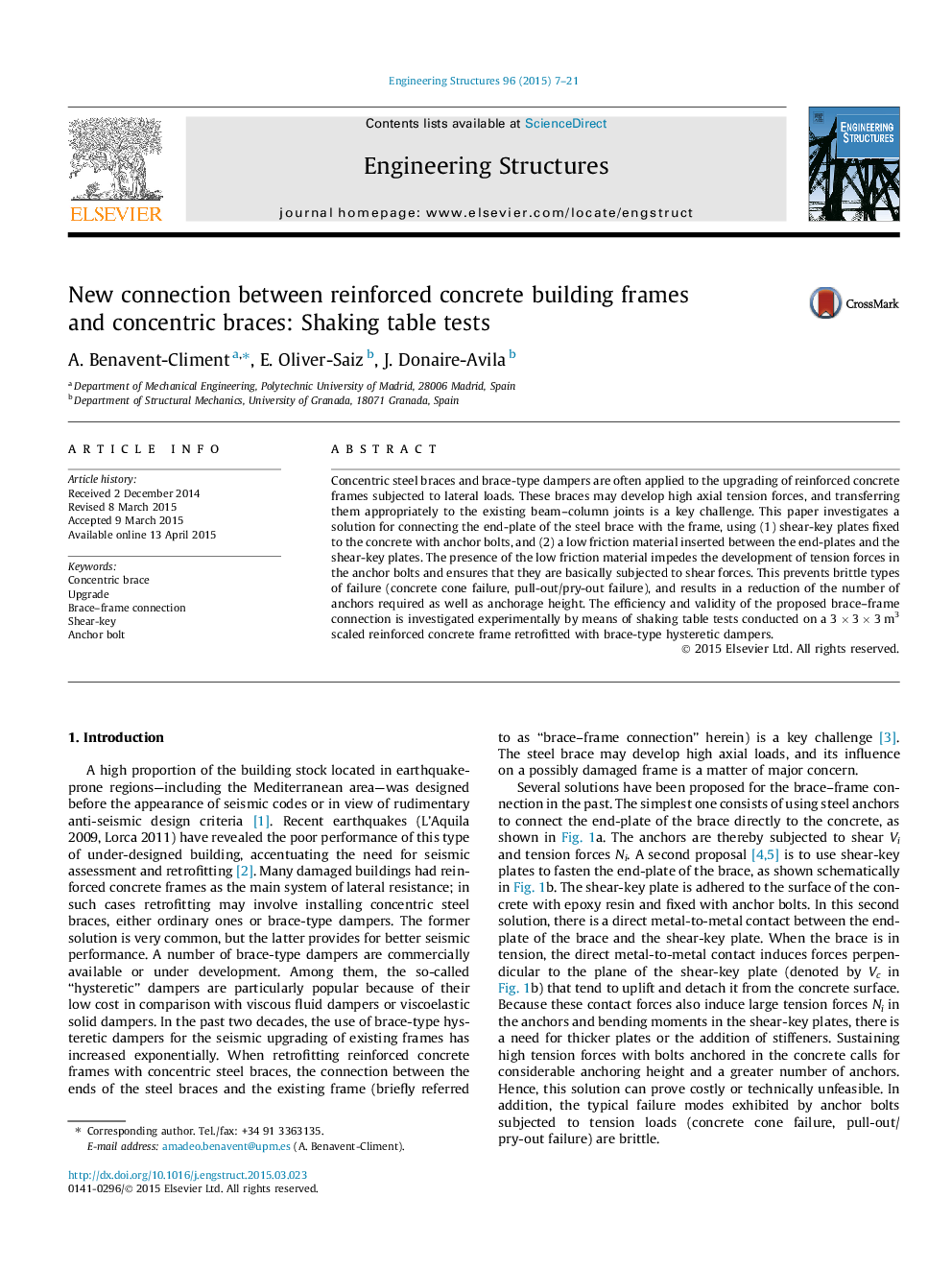| Article ID | Journal | Published Year | Pages | File Type |
|---|---|---|---|---|
| 266274 | Engineering Structures | 2015 | 15 Pages |
•Transferring brace axial forces to existing beam–column joints is a key challenge.•A connection with shear-key plates and a device for reducing friction is proposed.•It prevents axial tension forces on the anchor bolts and bending on the shear-key plates.•The efficiency and validity of the proposed connection is tested in a shaking table.
Concentric steel braces and brace-type dampers are often applied to the upgrading of reinforced concrete frames subjected to lateral loads. These braces may develop high axial tension forces, and transferring them appropriately to the existing beam–column joints is a key challenge. This paper investigates a solution for connecting the end-plate of the steel brace with the frame, using (1) shear-key plates fixed to the concrete with anchor bolts, and (2) a low friction material inserted between the end-plates and the shear-key plates. The presence of the low friction material impedes the development of tension forces in the anchor bolts and ensures that they are basically subjected to shear forces. This prevents brittle types of failure (concrete cone failure, pull-out/pry-out failure), and results in a reduction of the number of anchors required as well as anchorage height. The efficiency and validity of the proposed brace–frame connection is investigated experimentally by means of shaking table tests conducted on a 3 × 3 × 3 m3 scaled reinforced concrete frame retrofitted with brace-type hysteretic dampers.
